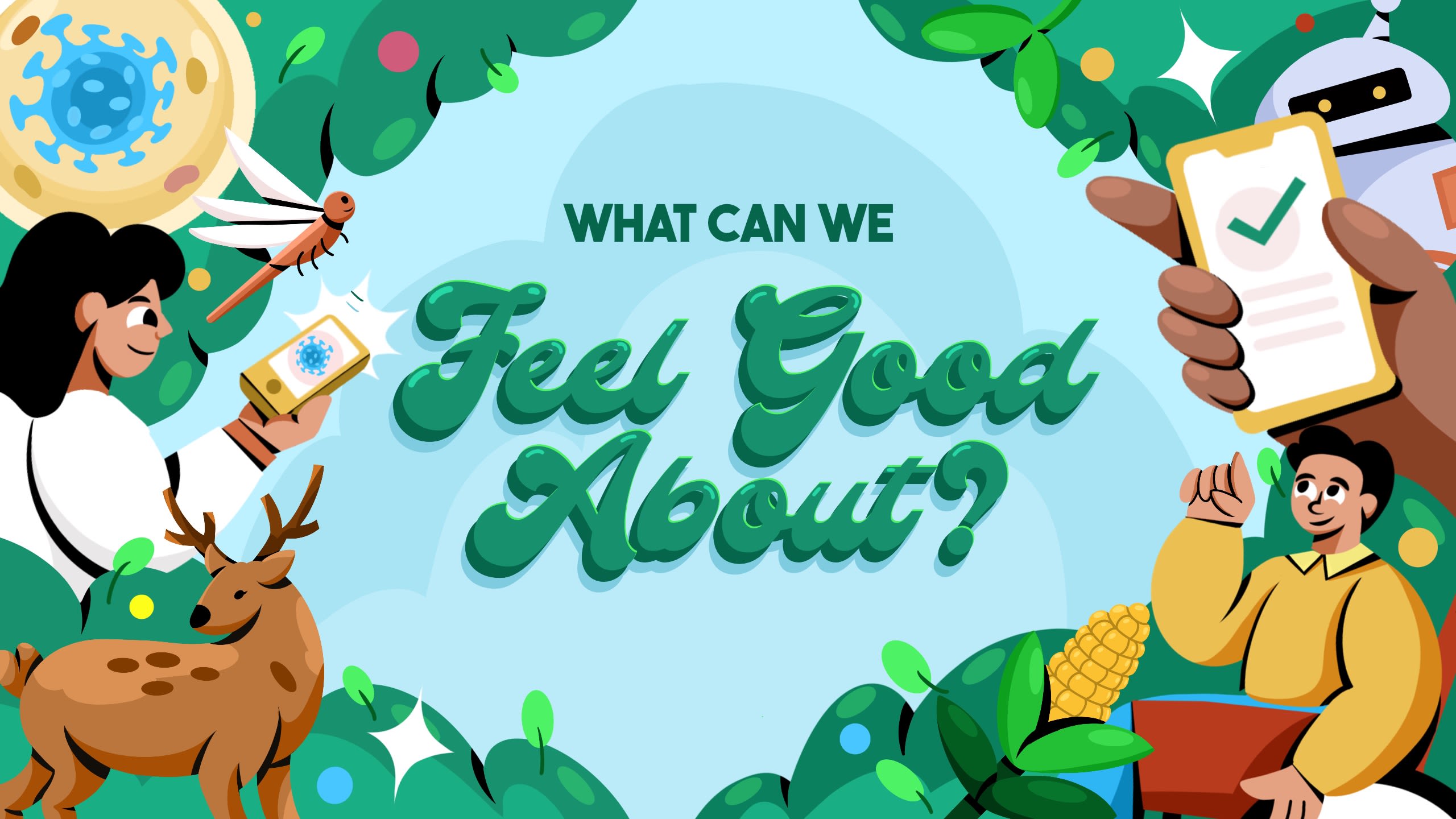
// By Marla Holt
// Illustrations by Bea Barros
Our daily news feeds are clogged with alarming stories about global health crises, gun violence, climate change, failing infrastructure, and a gridlocked political system.
Every issue seems to have an “us versus them” divisive component to it, making it easy to become cynical.
But we know the news is more complicated than most media diets—composed mainly of sound bites and tweets—would suggest, and there are plenty of reasons for hope. To lift our collective mood, we asked Boilermakers to share stories of research and innovative work that will leave us feeling good. Here’s what they had to offer.

POTHOLES MIGHT BECOME A THING OF THE PAST
Luna Lu, acting head and the Reilly Professor of Civil Engineering at Purdue’s Lyles School of Civil Engineering, has developed “smart” concrete that might just solve our road construction woes by enabling highways and bridges to prevent their own damage.
“We’re working to make infrastructure more resilient and sustainable.”
Lu’s lab created a smart sensor, which is embedded in new road construction, giving concrete the ability to “communicate” with engineers by sending data that measures stress levels and pinpoints when roads and bridges need repair. It also monitors the amount of time needed for newly poured concrete to sufficiently cure before taking on heavy traffic. The technology was recently named one of 2022’s Next Big Things in Tech by Fast Company magazine.
Data collected by the smart sensor also enables engineers to use an optimized concrete mix that reduces the quantity needed for road construction while still meeting quality standards and target strengths, Lu says.
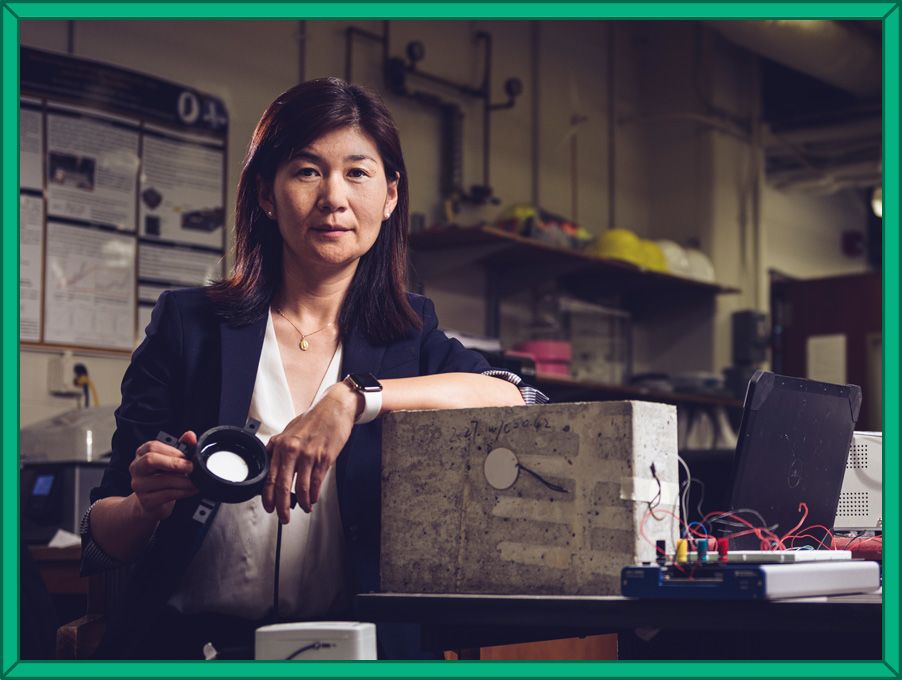
Luna Lu (Purdue University)
Luna Lu (Purdue University)
“The common practice has been to use 20–25% more cement per cubic yard than is actually needed, which is wasteful,” she says. Using less cement will save billions of dollars in materials costs while also reducing CO2 emissions associated with cement manufacturing, which accounts for at least 8% of the world’s carbon emissions.
Lu’s laboratory is also developing an internal curing agent that can be mixed into concrete, helping the material to self-heal.
“This nanosilica reacts with the cement and water to make calcium-silicate hydrates—basically a glue that can seal small cracks,” Lu says. “By gluing the aggregates together, it further strengthens the concrete. The goal is to eventually reduce potholes, and, more importantly, extend the life expectancy of bridges, roads, and buildings and avoid catastrophic failure.”



RAPID DETECTION OF PATHOGENS REDUCES OUR CHANCES OF GETTING SICK
OmniVis, a Purdue-affiliated biotechnology company, has developed a lightweight handheld device that enables users to rapidly detect pathogens in food, water, and plant samples in less than 30 minutes.
The battery-operated device, iSpyDx, is used in conjunction with single-use disposable test kits that detect specific pathogens through a DNA amplification process. Designed to meet laboratory standards without extra equipment or special training, the testing enables on-the-spot detection of potentially dangerous pathogens.

“You don’t need a scientific background to use iSpyDx, as the device walks you through the process every single time,” says OmniVis CEO and founder Katherine Clayton (PhD ME’17).
OmniVis was founded in 2017 to help organizations, water-testing labs, and local governments detect the presence of cholera in water.
“We’ve since turned toward food safety,” Clayton says, noting how iSpyDx is helping food manufacturers in the United States detect the presence of pathogens such as E. coli, Listeria, and Salmonella in their processing facilities. With more than 48 million Americans affected by food poisoning every year, early detection of food-borne pathogens can reduce our chances of getting ill.
“Our diagnostic tool allows food and beverage companies more time to mitigate problems and avoid costly recalls of contaminated food on the market,” Clayton says.
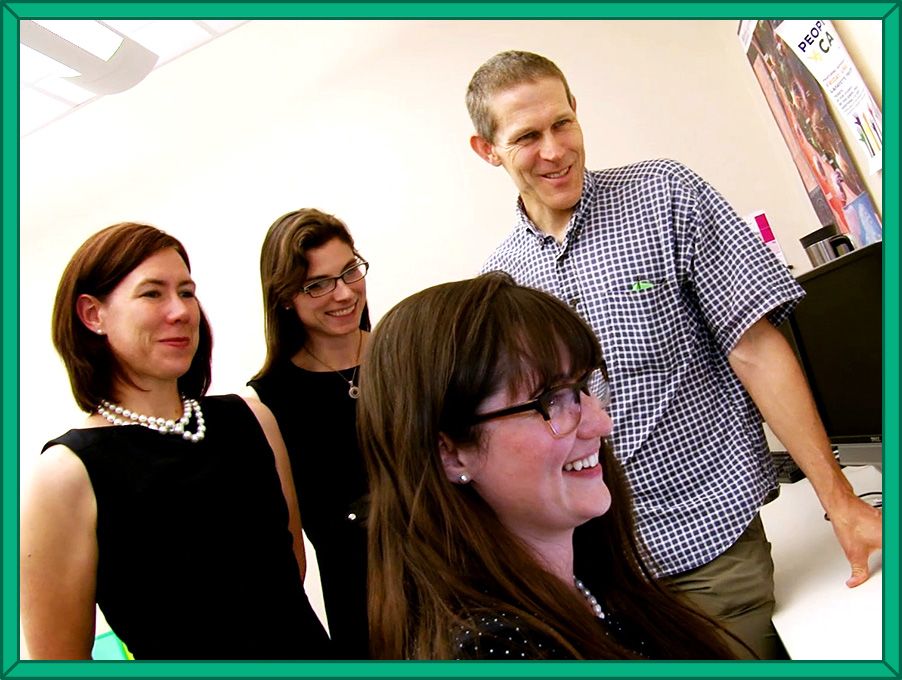
Katherine Clayton (front) leads the OmniVis team. (Purdue University)
Katherine Clayton (front) leads the OmniVis team. (Purdue University)
OmniVis is garnering attention as a promising startup in support of food safety and global health initiatives. The company was named to the 2022 Most Fundable Companies list from Pepperdine University’s Graziadio Business School and recently earned recognition by Imagine H2O as a game changer in water innovation for its device’s ability to detect waterborne pathogens.
“As we become able to swap out the chemistries in our test kits, we can start detecting any kind of pathogen that has DNA or RNA in it. That might just lead to detecting the next big disease around the corner.”
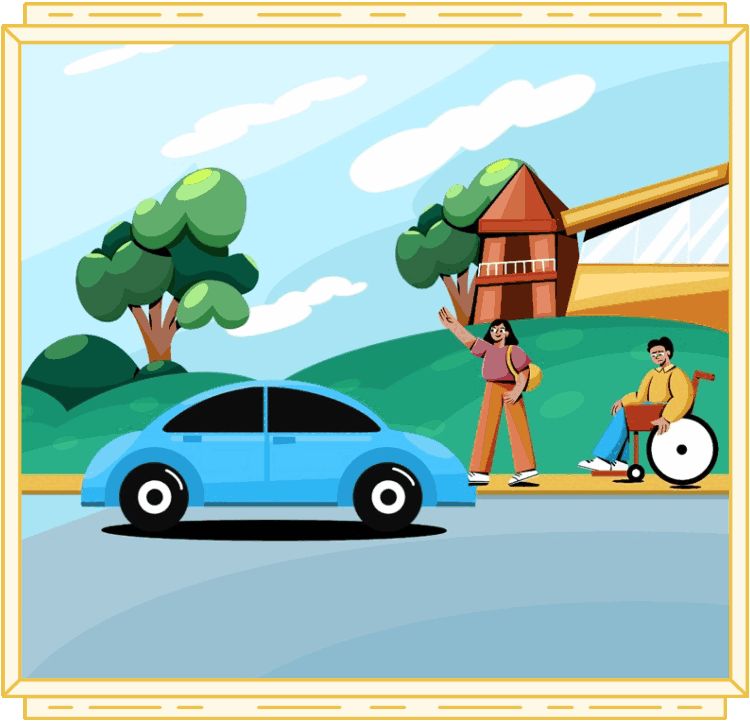
INCLUSIVE DESIGN IS A WIN-WIN FOR EVERYBODY
New technology is often developed with able-bodied users in mind. This excludes about 10% of the world’s population—or roughly 650 million people with disabilities.
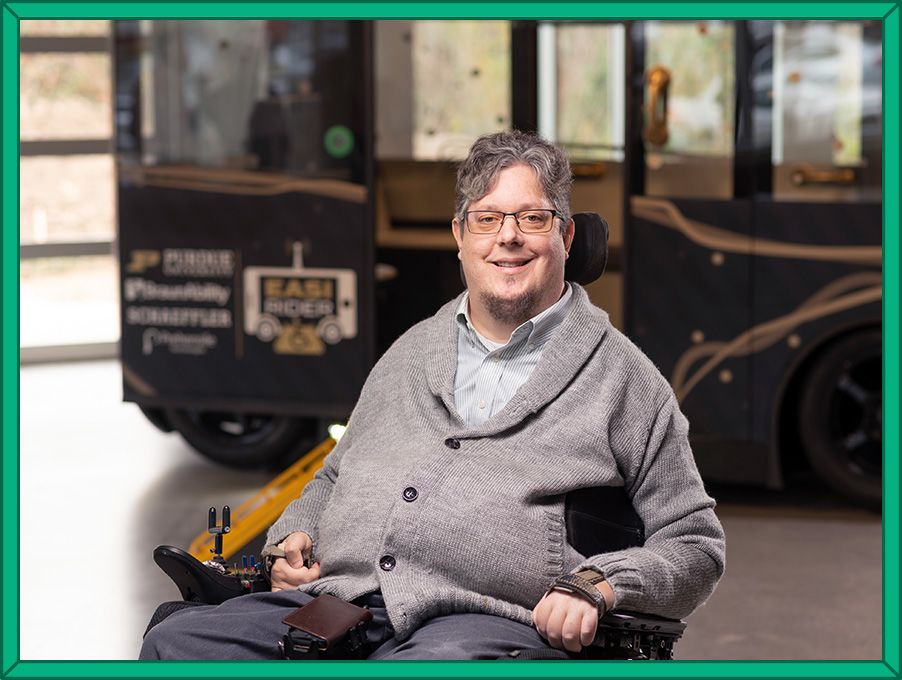
Brad Duerstock (Purdue University/John Underwood)
Brad Duerstock (Purdue University/John Underwood)
When accommodations are retroactively added, the changes are tacked on to the original design and costs are often higher, says Brad Duerstock (EnE’94, PhD V’99), professor of practice in industrial engineering and biomedical engineering, who leverages his own experiences as a wheelchair user in his research on improving accessibility, particularly in transportation.
“It just makes sense that design should be universally inclusive from the beginning.”
Duerstock and his colleague Brandon Pitts, assistant professor of industrial engineering, are working to ensure that when autonomous transportation becomes widespread, it accommodates people with any disability or mobility challenge.
They’ve partnered with Indiana–based BraunAbility, a vehicle accessibility solutions manufacturer, to design and construct EASI RIDER, an autonomous vehicle-like prototype that demonstrates features that would be needed to serve people with a range of physical and sensory disabilities.
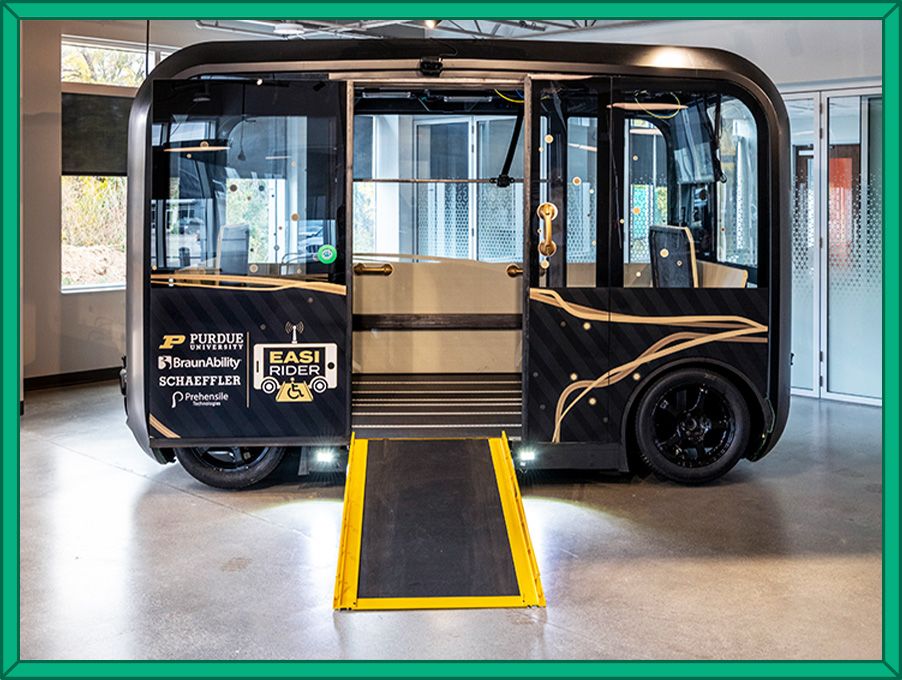
(Purdue University/John Underwood)
(Purdue University/John Underwood)
“It’s exciting to be part of the national conversation about this emerging technology,” Duerstock says. “Autonomous transportation represents the independence to go wherever you wish, whenever you wish. Giving people with disabilities that freedom would make a huge impact on the community.”
He notes that people often bring up cost when discussing accessibility, but “the cost of inclusive design and construction is negligible up front versus retroactively.”
The design concept of EASI RIDER won first place in the U.S. Department of Transportation’s Inclusive Design Challenge competition in July 2022. Duerstock hopes such attention will encourage autonomous vehicle designers and manufacturers to consider everyone’s needs, not just those who are able-bodied, from the get-go.
“Inclusive design can be enjoyed by everyone equally,” he says. “If it’s good design, it should be universally beneficial.”



DIVERSIFYING AGRICULTURAL PROCESSES, LANDSCAPES, AND MARKETS CAN BENEFIT FARMERS, CONSUMERS, AND THE ENVIRONMENT
Corn and soybeans have been the dominant farm crops in the Corn Belt—Illinois, Iowa, and Indiana—for decades. In 2020 alone, the region harvested 448 million tons of corn and soybeans on 138 million acres.
Even so, the time for change has come, says Linda Prokopy, professor of horticulture and landscape architecture in Purdue’s College of Agriculture.
“The corn and soybean monoculture of the Midwest is no longer serving us as well. We know that demand for corn will decline, and environmental factors such as soil erosion, high greenhouse-gas emissions, and worsening water quality will become more prevalent.”
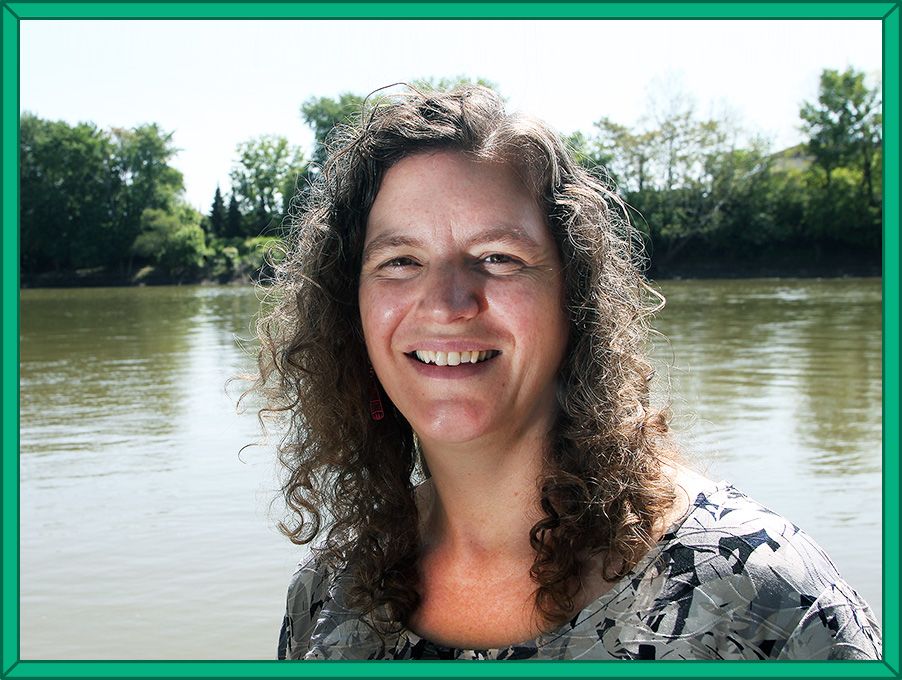
Linda Prokopy (Purdue Agricultural Communications/Tom Campbell)
Linda Prokopy (Purdue Agricultural Communications/Tom Campbell)
To address these concerns, Prokopy is leading a five-year multidisciplinary Diverse Corn Belt project aimed at farm-, market-, and landscape-level diversity—from more options for crop rotations and livestock to marketing a wider variety of agricultural products to implementing climate-smart farming systems. The project, which was awarded a $10 million grant by the USDA’s National Institute of Food and Agriculture, is partnering with farmers and other agricultural stakeholders to explore the impact of diversified farming systems.
“We’re working all along the supply chain to create visions and pathways to alternate landscapes that are socially, economically, and environmentally beneficial.”
The Diverse Corn Belt project will combine field data collected by agronomists, entomologists, and soil scientists with survey insights from farmers and other stakeholders to model economic and ecological outcomes of diversification.
“We’re helping farmers think about alternate futures that make sense for them,” Prokopy says. “As for the rest of us, diversified farming will lead to healthier rural communities, a better environment, and hopefully healthier, more local food sources.”

EQUITABLE AND RESPONSIBLE DEVELOPMENT AND USE OF TECHNOLOGY CREATES A BETTER WORLD
Who develops technology, who funds it, and how we put it to use in our communities matters in creating a more equitable world, says public interest technologist Afua Bruce (ECE’05), who has spent her career working at the intersection of technology and policy.
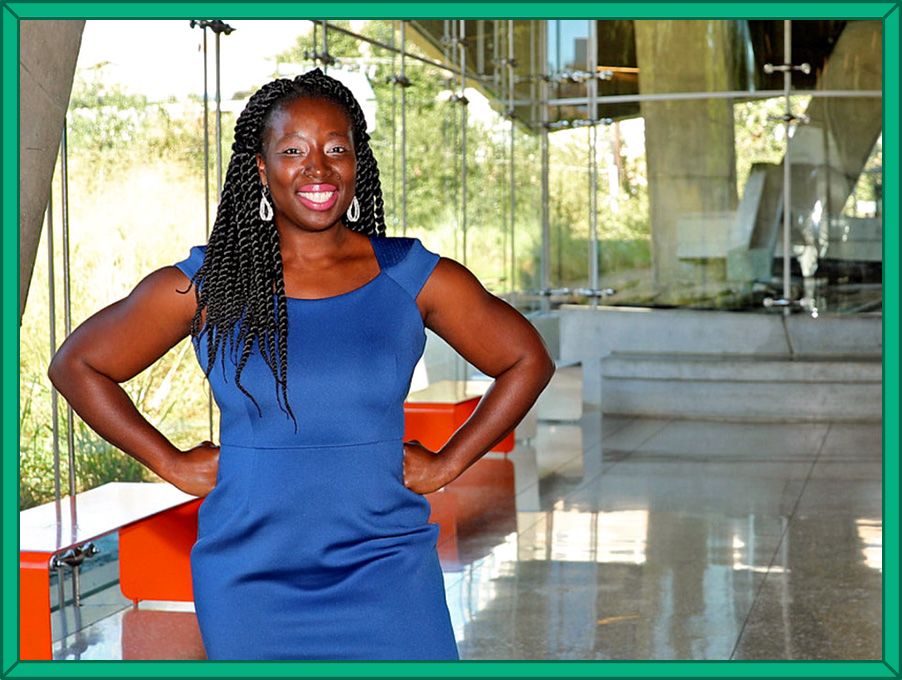
Afua Bruce (Photo courtesy of Lyda Hill Philanthropies’ IF/THEN Initiative)
Afua Bruce (Photo courtesy of Lyda Hill Philanthropies’ IF/THEN Initiative)
“As governments become more data driven, we’re applying technological expertise in ways that serve the public good and generate public benefits,” she says.
“We’re ensuring that the information policymakers use to create change reflects all communities, including those that have been historically marginalized.”
Bruce is the coauthor of The Tech That Comes Next: How Changemakers, Philanthropists, and Technologists Can Build an Equitable World and the founder and principal consultant at ANB Advisory Group. Her previous appointments include the FBI, the White House Office of Science and Technology Policy, and President Biden’s transition agency review team at the Department of Justice.
“The big questions for public-interest tech are, ‘How can we use artificial intelligence to empower communities? How can we create technology that works for everyone?’”
Examples of the intersection of technology and policy are all around us. For example, HIPAA—the federal legislation passed in 1996 that required the creation of national standards to protect sensitive patient health information from being disclosed without the patient’s consent or knowledge—came about after research by a Harvard University engineer showed that health data wasn’t anonymous at the time.
Bruce says that as technology continues to expand into everyday life, it’s important to use artificial intelligence ethically and responsibly. Impacts include designing products—such as automatic faucets and exercise trackers—to recognize dark skin tones; creating foster-care systems that get more children into safe and approved homes; and tackling larger societal problems, such as food insecurity, climate change, and criminal justice reform.
“There are many challenges for public-interest tech to address in the future, and we’re only limited by the imaginations of the people who are working on these issues,” Bruce says. “It’s exciting to see the many different ways that we can use technology—with a bit of understanding of policy—to impact people’s lives.”



ADDING OXYGEN TO WATER PROTECTS, SUSTAINS, AND RESTORES ONE OF OUR MOST VALUABLE RESOURCES
Increasing oxygen levels in water has implications for water quality, aquatic life, and the environment.
ECO Oxygen Technologies is an Indiana–based company that provides custom engineered Superoxygenation systems for water and wastewater. Its environmentally friendly alternatives to traditional chemical treatment systems have both municipal and industrial applications and can also be used to improve water quality in rivers, lakes, and reservoirs.
The company’s technology, which dissolves pure oxygen into water efficiently, is cleaning wastewater—one of the most significant generators of methane, a greenhouse gas that has more than 80 times the warming power of carbon dioxide over the first 20 years after it reaches the atmosphere.
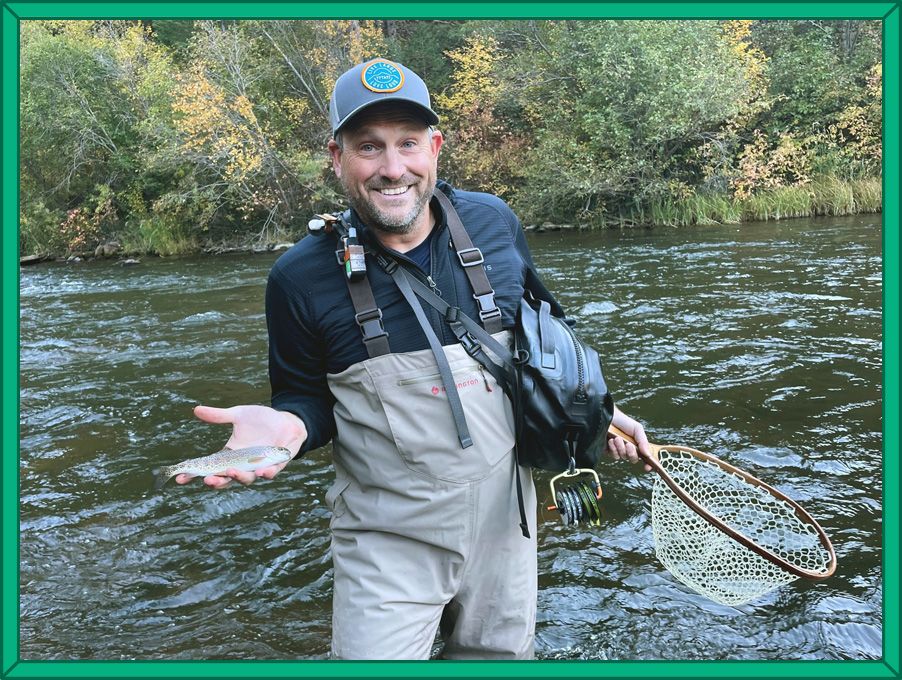
David Clidence
David Clidence
“Reducing methane production in wastewater helps municipalities meet their sustainability goals,” says David Clidence (CE’00), president and CEO of ECO Oxygen Technologies. “Adding oxygen to wastewater creates aerobic conditions that prevent the formation of methane as well as the formation of hydrogen sulfides—or what causes odor and corrosion in the infrastructure.”
Increasing oxygen levels in lakes and rivers is also important as we work toward improving water quality and countering the effects of climate change, Clidence says.
“Many bodies of water have become anaerobic and contain bacteria that leads to fish kills and algae production,” he says. “Additionally, some pollutants that are released from sediments in the water column can cause taste and odor issues for drinking water.”
Adding oxygen to lakes and rivers allows for compliance with environmental regulations, and—in drinking water reservoirs—additional oxygen keeps taste and odor–affecting compounds from forming.
As the climate changes, maintaining proper oxygen levels in water is vital, Clidence says. “The combination of drought and hotter temperatures is a double negative—less water to dilute pollutants and hotter water less able to hold oxygen. Superoxygenation technology can offset those impacts by keeping pollutants at bay.”
Read more stories from this issue of Purdue Alumnus magazine.
View a text-only version of this story.
